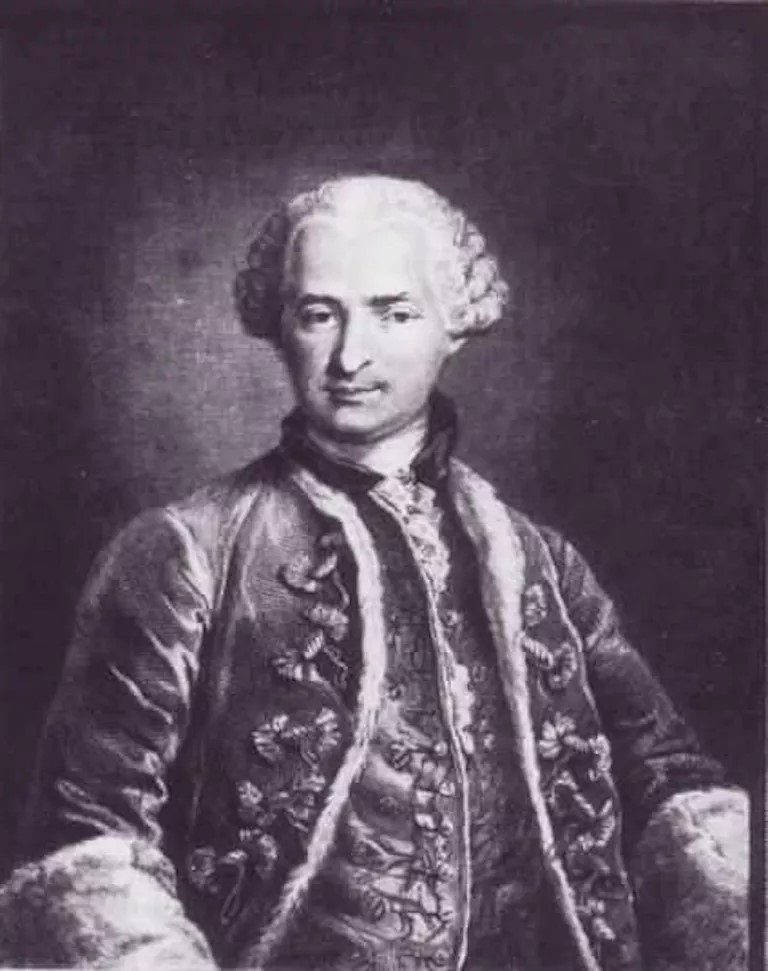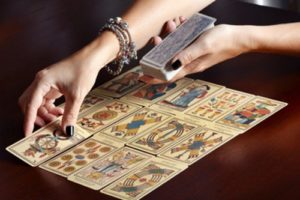He was an alchemist who, it is believed, discovered the secret of eternal life
By Stephen Wagner
Is it possible that a man can achieve immortality — to live forever? That is the startling claim of a historical figure known as Count de Saint-Germain. Records date his birth to the late 1600s, although some believe that his longevity reaches back to the time of Christ. He has appeared many times throughout history — even as recently as the 1970s — always appearing to be about 45 years old. He was known by many of the most famous figures of European history, including Casanova, Madame de Pompadour, Voltaire, King Louis XV, Catherine the Great, Anton Mesmer and others.
Who was this mysterious man? Are the stories of his immortality mere legend and folklore? Or is it possible that he really did discover the secret of defeating death?
Origins
When the man who first became known as Saint-Germain was born is unknown, although most accounts say he was born in the 1690s. A genealogy compiled by Annie Besant for her co-authored book, The Comte De St. Germain: The Secret of Kings, asserts that he was born the son of Francis Racoczi II, Prince of Transylvania in 1690. Other accounts, taken less seriously by most, say he was alive in the time of Jesus and attended the wedding at Cana, where the young Jesus turned water into wine. He was also said to be present at the council of Nicaea in 325 A.D.
What is almost unanimously agreed on, however, is that Saint-Germain became accomplished in the art of alchemy, the mystical “science” that strives to control the elements. The foremost goal of this practice was the creation of “projection powder” or the elusive “philosopher’s stone,” which, it was claimed when added to the molten form of such base metals as lead could turn them into pure silver or gold. Furthermore, this magical power could be used in an elixir that would impart immortality on those who drank it. Count de Saint-Germain, it is believed, discovered this secret of alchemy.
Courting European Society
Saint-Germain first came into prominence in the high society of Europe in 1742. He had just spent five years in the Shah of Persia’s court where he had learned the jeweler’s craft. He beguiled the royals and the rich with his vast knowledge of science and history, his musical ability, his easy charm, and quick wit. He spoke many languages fluently, including French, German, Dutch, Spanish, Portuguese, Russian and English, and was further familiar with Chinese, Latin, Arabic — even ancient Greek and Sanskrit.
It might have been his extraordinary learnedness that led acquaintances to see that he was a remarkable man, but an anecdote from 1760 most likely gave rise to the notion that Saint-Germain could be immortal. In Paris that year, Countess von Georgy heard that a Count de Saint-Germain had arrived for a soiree at the home of Madame de Pompadour, mistress of King Louis XV of France. The elderly countess was curious because she had known a Count de Saint-Germain while in Venice in 1710. Upon meeting the count again, she was astonished to see that he hadn’t appeared to age and asked him if it was his father she knew in Venice.
“No, Madame,” he replied, “but I myself was living in Venice at the end of the last and the beginning of this century; I had the honor to pay you court then.”
“Forgive me, but that is impossible!” the perplexed countess said. “The Count de Saint-Germain I knew in those days was at least forty-five years old. And you, at the outside, are that age at present.”
“Madame, I am very old,” he said with a knowing smile.
“But then you must be nearly 100 years old,” said the astonished countess.
“That is not impossible,” the count told her matter-of-factly, then continued to convince the countess that he was indeed the same man she knew with the details of their previous meetings and of life in Venice 50 years earlier.
Ever Present, Never Aging
Saint-Germain traveled extensively throughout Europe over the next 40 years — and in all that time never seemed to age. Those who met him were impressed by his many abilities and peculiarities:
- He could play the violin like a virtuoso.
- He was an accomplished painter.
- Wherever he traveled, he set up an elaborate laboratory, presumably for his alchemy work.
- He seemed to be a man of great wealth but was not known to have any bank accounts. (If it was due to his ability to transmute base metals into gold, he never performed the feat for observers.)
- He dined often with friends because he enjoyed their company, but was rarely seen to eat food in public. He subsisted, it was said, on a diet of oatmeal.
- He prescribed recipes for the removal of facial wrinkles and for dyeing hair.
- He loved jewels, and much of his clothing — including his shoes — were studded with them.
- He had perfected a technique for painting jewels.
- He claimed to be able to fuse several small diamonds into one large one. He also said he could make pearls grow to incredible sizes.
- He has been linked to several secret societies, including the Rosicrucians, Freemasons, Society of Asiatic Brothers, the Knights of Light, the Illuminati and Order of the Templars.
The renowned 18th philosopher, Voltaire — himself a respected man of science and reason — said of Saint-Germain that he is “a man who never dies, and who knows everything.”
Throughout the 18th century, Count de Saint-Germain continued to use his seemingly endless knowledge of the world in the politics and social intrigues of the European elite:
- The 1740s he became a trusted diplomat in the court of King Louis XV of France, performing secret missions for him in England.
- In 1760 he performed a similar function at the Hague, where he met the infamous lover, Giacomo Girolamo Casanova. Casanova later said of Saint-Germain, “This extraordinary man… would say in an easy, assured manner that he was 300 years old, that he knew the secret of the Universal Medicine, that he possessed a mastery over nature, that he could melt diamonds… all this, he said, was mere trifle to him.”
- In 1762 he traveled to Russia where it is said he was complicit in a conspiracy that placed Catherine the Great on the throne. He later advised the commander of the Imperial Russian armies in the war against Turkey (which they won).
- In 1774 he returned to France when Louis XVI and Marie Antoinette occupied the throne. He allegedly warned them of the revolution that was to come 15 years in the future.
In 1779 he went to Hamburg, Germany, where he befriended Prince Charles of Hesse-Cassel. For the next five years, he lived as a guest in the prince’s castle at Eckernförde. And, according to local records, that is where Saint-Germain died on February 27, 1784.
Back From the Dead
For any ordinary mortal, that would be the end of the story. But not for Count de Saint-Germain. He would continue to be seen throughout the 19th century and into the 20th century.
- In 1785 he was seen in Germany with Anton Mesmer, the pioneer hypnotist. (Some claim that it was Saint-Germain who gave Mesmer the basic ideas for hypnotism and personal magnetism.)
- Official records of Freemasonry show that they chose Saint-Germain as their representative for a convention in 1785.
- After the taking of the Bastille in the French Revolution in 1789, the Comtesse d’Adhémar said she had a lengthy conversation with Count de Saint-Germain. He allegedly told her of France’s immediate future, as if he knew what was to come. In 1821, she wrote: “I have seen Saint-Germain again, each time to my amazement. I saw him when the queen [Antoinette] was murdered, on the 18th of Brumaire, on the day following the death of the Duke d’Enghien, in January, 1815, and on the eve of the murder of the Duke de Berry.” The last time she saw him was in 1820 — and each time he looked to be a man no older than his mid-40s.
After 1821, Saint-Germain may have taken on another identity. In his memoirs, Albert Vandam wrote of meeting a man who bore a striking resemblance to Count de Saint-Germain, but who went by the name of Major Fraser. Vandam wrote:
“He called himself Major Fraser, lived alone and never alluded to his family. Moreover he was lavish with money, though the source of his fortune remained a mystery to everyone. He possessed a marvelous knowledge of all the countries in Europe at all periods. His memory was absolutely incredible and, curiously enough, he often gave his hearers to understand that he had acquired his learning elsewhere than from books. Many is the time he has told me, with a strange smile, that he was certain he had known Nero, had spoken with Dante, and so on.”
Major Fraser disappeared without a trace.
Between 1880 and 1900, Saint-Germain’s name once again became prominent when members of the Theosophical Society, including famed mystic Helena Blavatsky, claimed that he was still alive and working toward the “spiritual development of the West.” There is even an allegedly genuine photo taken of Blavatsky and Saint-Germain together. And in 1897, the famous French singer Emma Calve dedicated an autographed portrait of herself to Saint-Germain.
The most recent appearance of a man claiming to be Saint-Germain was in 1972 in Paris when a man named Richard Chanfray announced he was the legendary count. He appeared on French television, and to prove his claim apparently turned lead into gold on a camp stove before the cameras. Chanfray later committed suicide in 1983.
So who was Count Saint-Germain? Was he a successful alchemist who found the secret of eternal life? Was he a time traveler? Or was he a highly intelligent man whose reputation became a fantastic legend?





